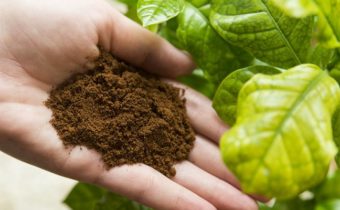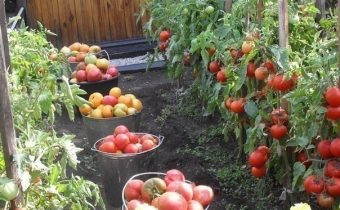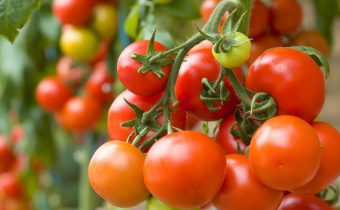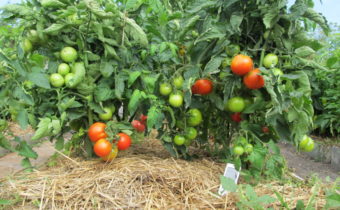Sawdust as mulch under tomatoes
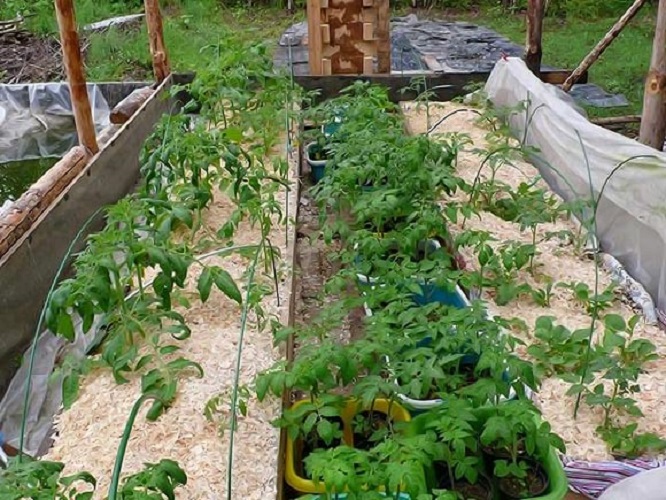
With insufficient soil moisture, tomatoes are not only deficient in water, but also do not absorb nutrients. Full drying of the soil leads to injury to the roots, which affects the number of ovaries and the size of the fruit.
Mulching slows down the process of evaporation of moisture from the soil and prevents the growth of weeds. As mulch for tomatoes use hay, straw, peat, pine needles, one of the best materials - sawdust.
Sawdust as mulch
Sawdust has the property of well absorb and retain moisture, moreover, they are quite dense material, so even on sunny and windy days the soil under the layer of mulch remains moist for a long time. In addition, the chips contain a high concentration of trace elements that are valuable for plants that the tree accumulated in the wood as it grows.
Fresh or refined raw materials
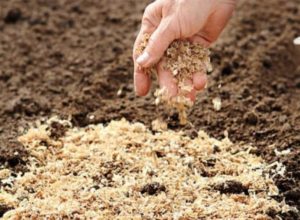 Nutrients are released in the process of decay, and cellulose is decomposed into carbon dioxide, glucose and water, so refined sawdust can bring maximum benefit to plants.
Nutrients are released in the process of decay, and cellulose is decomposed into carbon dioxide, glucose and water, so refined sawdust can bring maximum benefit to plants.
When introduced into the soil humus from sawdust improves its structure, making it easier, more loose, which is important when growing tomatoes on clay soils. Fresh raw material is safe for planting, while fresh and even half-rotted sawdust increases the acidity of the soil and absorbs nitrogen from it.
With regular use for several years:
- fresh sawdust will increase the acidity, that is, reduce the pH, by 2-3 units;
- half-rotten - by 1-2 units;
- rotting - 0.1-0.9 units.
To prevent unwanted acidification of the soil, the mulch is mixed with crushed chalk, ash, dolomite flour or slaked lime. But means for alkalization of the soil level the effects of exposure to fresh sawdust less than 2 times.
Completely pereprevayut sawdust, lain wet for several years.
Softwood or hardwood
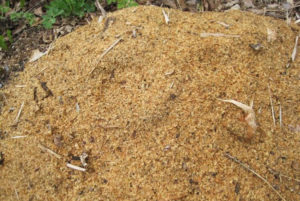 For mulching of tomatoes, sawdust of both coniferous and deciduous trees can be used.
For mulching of tomatoes, sawdust of both coniferous and deciduous trees can be used.
Coniferous (as a rule, pine or spruce because of the cheapness of these varieties of wood) intersect longer than deciduous, actively take nitrogen and have a greater oxidizing effect on the soil, expressed even in the case of rotted raw materials. Therefore, when using the material as mulch, additional measures will be needed to oxidize and saturate the soil with nitrogen. At the same time, the high content of resins makes rotted conifer sawdust excellent dressing.
Hardwood shavings rot faster, but less rich in microelements. Even fresh and half-hardwood sawdust less affect the acidity and nitrogen content in the soil than coniferous.
To mulch a tomato
The material is placed in the near-stem circle of tomatoes, forming a layer of 10-15 cm in several passes:
- immediately after planting seedlings of plants in the ground;
- at the beginning of flowering;
- after the appearance of the ovaries;
- during fruit ripening.
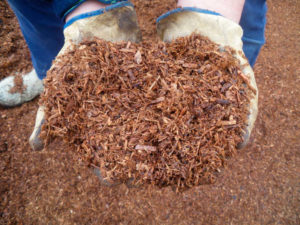 Before you begin to mulch the planting, you should clarify the acidity of the soil. As mulch material will be especially useful for tomatoes growing on alkaline soils - the culture requires a soil with a slight acidity. In this case, partly rotten sawdust should be applied to stimulate soil acidification.The loss of nitrogen will need to be replenished by soaking the raw material with a solution of urea. If the acidity of the soil is in the range of pH 6.0-6.5 or increased, it is recommended to use only rotten sawdust in order not to aggravate the situation.
Before you begin to mulch the planting, you should clarify the acidity of the soil. As mulch material will be especially useful for tomatoes growing on alkaline soils - the culture requires a soil with a slight acidity. In this case, partly rotten sawdust should be applied to stimulate soil acidification.The loss of nitrogen will need to be replenished by soaking the raw material with a solution of urea. If the acidity of the soil is in the range of pH 6.0-6.5 or increased, it is recommended to use only rotten sawdust in order not to aggravate the situation.
The order of mulching tomatoes:
- Before the procedure, the soil should be plowed and cleared of weeds.
- If the soil is sour or coniferous sawdust is used (even completely rotted) after loosening, sprinkle the soil with dolomite flour or ash.
- After loosening and making (if necessary) deoxidizing agents, planting should be poured abundantly.
- In the lower layer of mulch put the least fresh material.
- If the raw material is partially refracted, after the layer is laid, the sawdust is poured on top with a solution of urea (0.05%).
- If coniferous sawdust is not placed in the second layer, or not completely rotted, then ash or chalk should be poured between it and the first layer, and after mulching, it should be repeated with urea.
- The third layer of mulch is no longer required to be watered with nitrogen-containing solutions, and ashes or other substances for liming the soil are applied only when using insufficiently refined sawdust.
- The last time that the fruits begin to ripen, mulching is carried out without protective measures for the soil.
A way to determine the acidity of the soil at the site at home: you need to brew a few currant or cherry leaves, and then throw in the resulting "tea" a little land from the garden. The soil with high acidity will color the solution in red, with low - in blue, and neutral soil - in green.
If mulch was used for deciduous hardwood sawdust, it is not necessary to remove them after harvesting and cleaning the beds from tops. They can be left as a fertilizer, especially since in a mixture with manure or compost after decay, wood waste turns into a valuable nutrient. To speed up the processes of decay, the soil after applying fertilizers or green manure must be poured with EM-preparations.
Advantages and disadvantages of raw materials
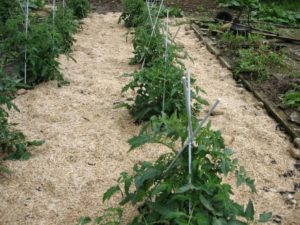 As a material for mulching sawdust valuable properties:
As a material for mulching sawdust valuable properties:
- retain moisture;
- air flow;
- improve soil structure;
- to be transformed upon decomposition into high-quality organic fertilizer;
- keep warm (in winter, you can use when you want to prevent freezing of the soil);
- inhibit the growth of weeds, reducing the likelihood of diseases and pests.
In addition, the raw material is not an expensive material, mulch suited sawdust from wood of different varieties and any size, you can make a mixture.
The disadvantages of the material include the ability to change the indicators of the soil (increased acidity, nitrogen depletion), but in some cases, these properties of raw materials may be useful. The main disadvantage is the long term decomposition, while fresh sawdust is not recommended to be applied to the beds.
Sawdust can be successfully used for mulching tomatoes. Raw material refines the soil, increasing its aeration qualities and fertility, but if improperly applied it can harm the planting of tomatoes and worsen the condition of the soil.


